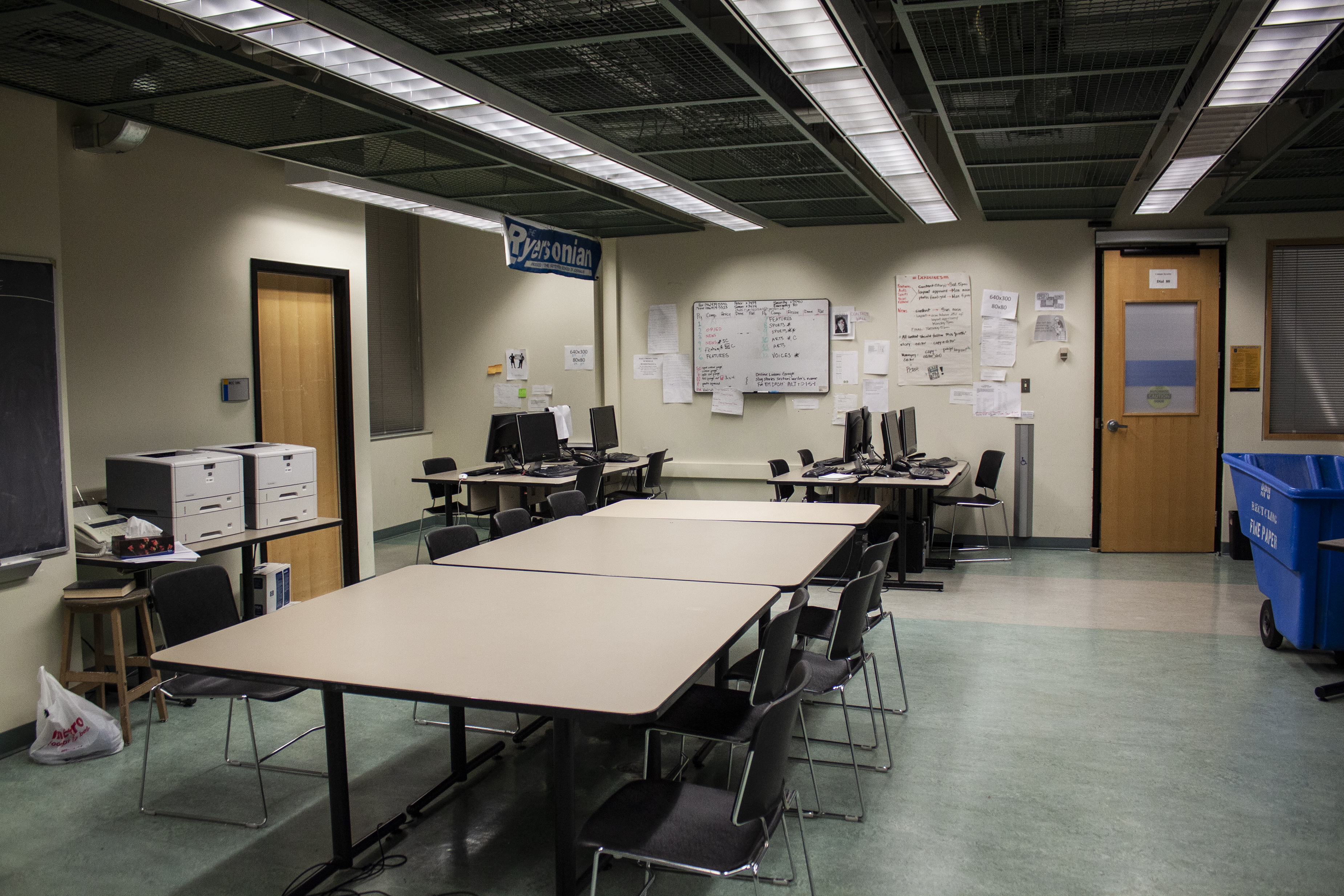
By Grade 10, I knew that I wanted to go to Ryerson University. Many people told me that I should check out the school. Subsequent months of researching universities convinced me that it would be the best J-school in Canada for me. Lots of vouching from journalists further solidified this. Four years later, having recently graduated from the program, I’d say they were mostly right. There were a number of things about the program that I didn’t like, but I left fulfilling my goal of feeling that I am a qualified journalist.
I find that there’s a divide among people in the industry over whether journalism is worthy a university or a college degree. I think the answer falls somewhere in the grey. On the one hand, the most important thing you need to know is, well, how to report. Writing an essay probably won’t teach you the basics of writing for print or radio. That said, it will strengthen your critical-thinking skills (and such). College may prove to be a better fit for others. For me, I wanted a university degree to keep my options open for a master’s degree down the line. I also desired to examine more aspects of the craft with more nuance than what I believed would be offered in college programs. Ultimately, there were about five journalism classes that offered that to the extent that I wanted.
The only other university I considered was Carleton University which, at the time, I felt was too academic for what I wanted. I met a few Carleton expats at Ryerson during my first year. They transferred because, as one of them told me, “We wrote only one report in first year.” The student was probably being a tad dramatic. At Ryerson, I had to write one report every two weeks during the first year. (Carleton has a terrific reputation, different programs have their own benefits, and programs change all the time, so do the research yourself on the Ryerson vs. Carleton debate; I’m no expert on the latter.)

The program
The program changed a year or so before I started. Before, based on how professors and students explained it to me, students started with print reporting and, later in the program, chose one journalism medium to focus on. It seems like an antiquated system because I find journalists these days are expected to, to some degree, know how to file for several mediums. The program I completed forced students to learn the basics of almost every medium (no, you couldn’t “just do print”). Students could dip all toes into all mediums, which is what I did. By the end of the second year I had to pick at least one medium I wanted to fully explore in order to get all of the necessary credits for the final year. For example, to get into “TV Documentary” in the final year, I had to take a specific third-year TV reporting class. As flexible as the program is, I eventually had to form a game plan.
During the first year, students learned the fundamentals of print journalism (and a bit of its long-form counterpart), and how to handle daily reporting. We also got our first taste of standard university classes. The second year introduced us to broadcast journalism and feature writing. The third year was better because I had more say on the courses I wanted to take; many of those were workshop courses. My final semester was split between doing an internship and producing the school’s newspaper the Ryersonian. Because I took so many courses ahead of time (during the summer), I had all of the required credits one semester early, though I still had to graduate with everyone else a semester later. Other students spent their time finishing a final semester of class and/or producing the Ryerson Review of Journalism.

First year
Many students weren’t smitten with the first year’s offerings; they wanted something more intense. Ryerson started us off with learning how to report for print. The professor for “JRN 120 – The Culture of News” sent us out onto Gould Street on the first day to get quotes from streeters (streeters are people, often found by reporters on sidewalks, asked to provide their opinions on something). This class provided many students with their first taste of reporting. Every two weeks, students would be assigned to report on one of the day’s news stories (two or three students would get the same one). My first story was on the then-new National Do Not Call List. I arrived at 10 a.m., researched my topic a bit, went outside to get quotes from streeters, and then finished writing the report inside. I don’t remember if I had many experts (or “talking heads”) in my pieces at first, but my reports got better week by week; they really did eventually resemble something I’d read in a daily newspaper. Minus the streeter interviews aspect of it, the toughest part for many students was the 6 p.m. deadline; students would lose half a grade point for every minute it was late.
The professor said we’d need to get the phone number of each person we quoted — yes, even streeters — because he warned that he might request the numbers to then call to check our facts. He never did that for any of my stories. I think I stopped asking for numbers after a while. One student in the program told me she faked all of her streeters’ quotes in her articles; that probably wasn’t the norm (and I never did, by-the-way). Streeter interviewing can be an awkward task, but it’s important to learn how to do it.
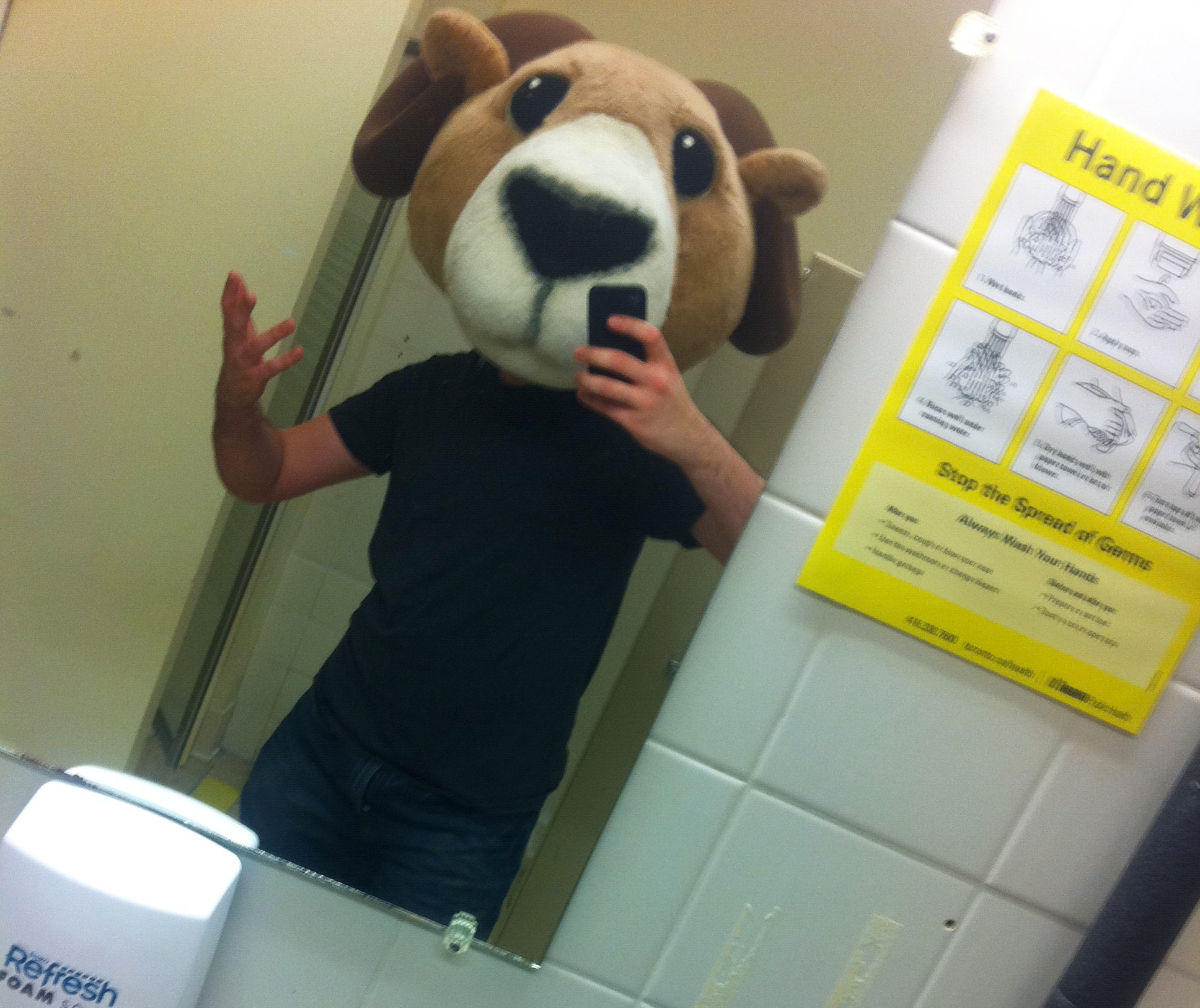
On days we didn’t have to report, we’d study Canadian Press style, learn how to use quotes properly, and such. The class was bland at times because I already knew a lot of what was being taught (I wrote for a couple of print publications prior to university).
The sequel to the class, “JRN 121 – Introduction to Reporting,” was essentially the same rodeo; we reported every two weeks during the second semester. We learned a bit about Canadian law relating to journalism. We reported on a court case for one assignment. Our major assignment was to write a profile on someone or write a feature.
“JRN 100 – Information and Visual Resources for Journalists,” back in first semester, taught us about different search engines, ways to research, etc. — important things to learn, though it felt like a bit of retread for me. We would have regular 10-question quizzes on stories that were in the news (this counted for participation marks). The most valuable part of this class was learning the basics of writing a feature. Our final assignment was to write a “Big Question” story. Students had to come up with a question, then answer it via a 2,000-word feature. Mine was: “Why do we watch scary movies?” The professor was fantastic, and there was one particularly cool thing she did during a lecture that I won’t ruin.
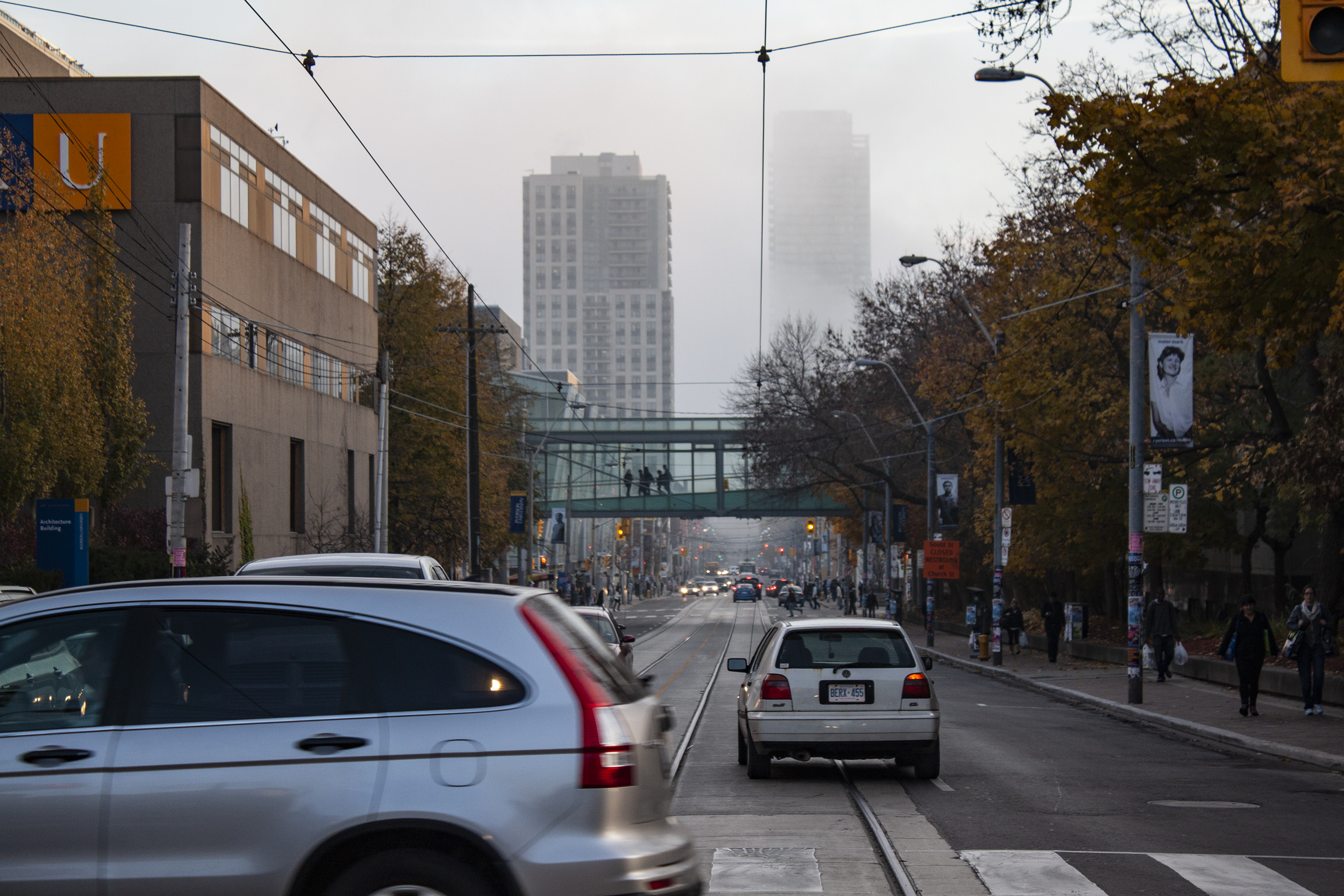
Typical journalism classes that had a hands-on approach, which often lasted between five and eight hours, required students to be there to get full marks (attendance was taken). We had lots of in-class work and, generally, not much homework. That said, there was normally one big assignment for the final class. For instance, with JRN 121, most of the grade was based on reports we had to complete every two weeks, about 10 per cent from participation, and 30 per cent from said big assignment.
Non-journalism classes were much different. Generally, the first major mark came from writing the midterm, normally consisting of answering five questions with a paragraph each, and then writing an essay. Winter midterms often came before reading week (our week off). (Ryerson didn’t have a fall reading week when I attended.) Then came the take-home essay. A week or two later, exam time arrived. The work was generally worth 25, 30 and 35 per cent, respectively. (For all you know-it-all mathematicians out there: I’ll explain the missing 10 per cent in a sec.)
Journalism classes that were more theory-based often followed this pattern but had students write the exam in the final class. It was great to be done a class early… having to study so intensely weeks before the time you’d have off to study for exams, not so much. (One could argue this was a good thing because exams were slightly more spread out as opposed to being held all within the same week or so). The other 10 per cent came from participation. Yes, participation marks. Professors claimed this mark came from, well, participating in class (answering questions, adding to discussions, and such), but I feel like everyone knew it was mainly earned by simply attending. Students had to sign in by writing their name on a piece of paper that was floated around, normally at the beginning of class (some profs switched up when they handed out the sheet — the start or the end of class — so people couldn’t sign in and then leave right away or only come at the end). Some professors really did only give students the full 10 per cent if they participated (this was truer with the smaller classes) but, based off of my experience, if students signed in for each class, they got at least eight per cent.
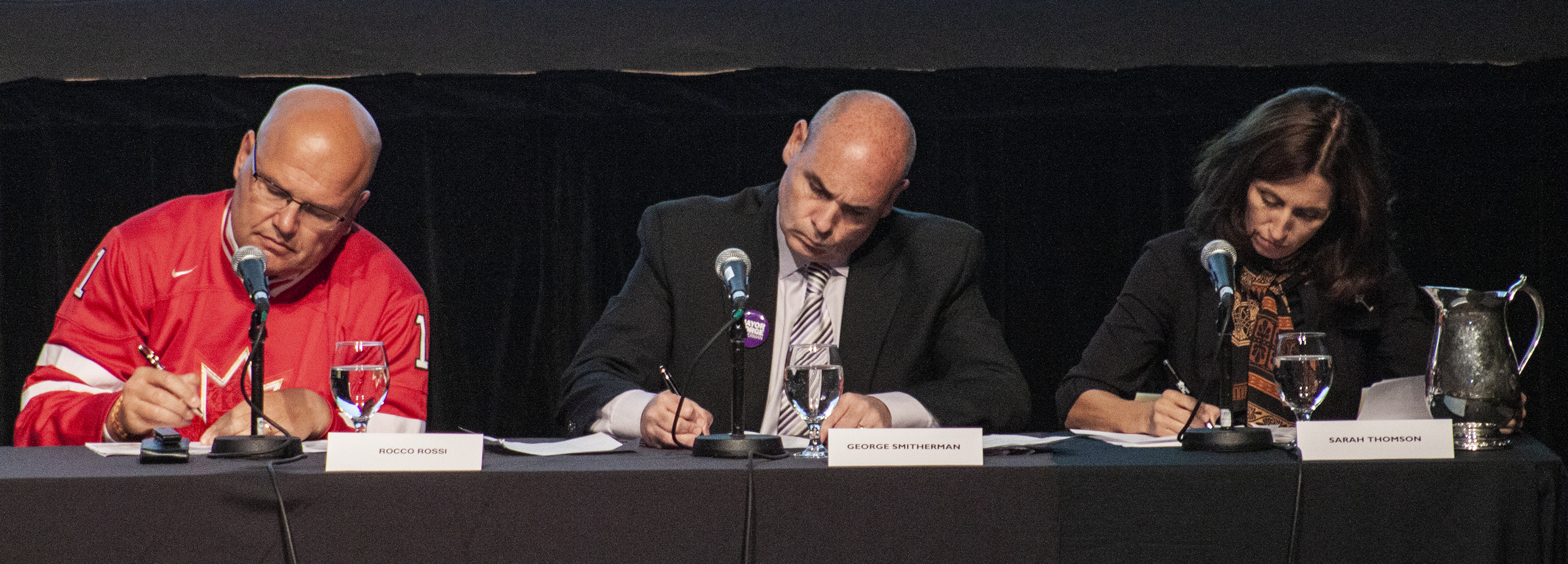
Non-journalism classes were typically three hours long. They were called lectures. I’d sit, listen, and take notes off of a professor’s PowerPoint presentation for those 165 minutes (we’d normally get a 15-minute break), then spend an hour in the accompany class, with a smaller number of students, called the tutorial, which is usually taught by a teaching assistant (TA). TAs, often grad students, would go through some of the topics explained in the lecture, answer questions from students, etc. Most of my TAs didn’t attend the lecture. Many would mark exams and essays. I often wouldn’t be satisfied with the mark my TA doled out, so I’d ask the professor to mark it again; that normally resulted in my mark getting bumped up at least one grade point.
Annoyingly, my tutorials were almost always held at an inconvenient time (not right after the lecture, which makes the most sense). I once had a Friday lecture between 2 and 5 p.m., and the tutorial was at 8 a.m. on the following Tuesday. Over the years, I wasn’t able to take several classes I wanted because of a tutorial conflicting with another course. Some of the larger lectures offered tutorials at different times but, of course, the tutorials with the times I wanted were already taken. Of course.
“ENG 108 – The Nature of Narrative I” was a required class for journalism students. This was a good class to get used to typical non-journalism classes at Ryerson. We read Mary Shelly’s “Frankenstein,” and other texts. Part II of this class featured one book from Michael Ondaatje, some Margaret Atwood works, and others. We also watched “Jarhead” (2005). The class was more of the same.

My electives for the year were “POG 100 – People, Power and Politics,” and “POG 319 – The Politics of Work and Labour.” The first was a good starter course to understand world politics. I liked that it looked at political concepts. (In hindsight, taking “POG 110 – Canadian Politics” first might have been a better idea.) As for the latter, I find the politics of unions interesting, so this was right up my alley. I should have worked my way up to this course, though, because they generally got progressively harder the higher the number.
First semester also featured “JRN 199 – Grammar.” This wasn’t a class per se, but rather a test on grammar. Students had to earn 75 per cent or more in order to pass. We got three chances. I got 72 or 73, I think, on my first try before passing it on my second attempt. Students who didn’t pass it supposedly couldn’t go into the second year of the program.
Books (also called “texts,” and “course readers”) sometimes added more than $300 to the cost of a class. I typically spent between $80 and $140 for non-journalism classes. Several journalism classes didn’t require students to buy any books. Some professors forced students to buy the latest edition of a course reader as opposed to buying the much cheaper, used counterpart used in prior years’ classes. The latest versions often had barely any different content. One professor made us buy a book that was in the public domain because it had an extra essay at the end. We used that “important essay we’ll be referencing in class” once in the semester for about two minutes, and it had absolutely no impact whatsoever on any exam or coursework. Many students photocopied their books to save money. There used to be a textbook grant given to students by the provincial government. It became exclusive to students on the Ontario Student Assistance Program the following year.

I determined that I wouldn’t be able to take all of the courses that I wanted if I followed the journalism program’s regular itinerary, so I took some of the required liberal studies courses during the summer. Although I found many faculty members and students to be relatively left-leaning (one politics and governance professor I had actually told the class they were), liberal studies courses didn’t entail memorizing Bob Rae’s speeches or reigniting Trudeaumania. No, they were simply there to “broaden your horizons; they open up the world to you; they enable you to look at the world from a variety of perspectives, to pursue ideas and interests beyond your specific career studies.” I had to take six courses (two lower level and four upper level courses). Many students detested taking them, especially journalism students, but I found a few classes to be fun.
“CSOC 103 – How Society Works” was my first and only ever online course at Ryerson. I attended the lectures by listening to MP3 files and scrolling through the related PowerPoint presentations in sync at home. The MP3 files seemed to have been recorded years prior. They weren’t edited well. The professor sometimes coughed right into the microphone or stopped speaking for a while. I sometimes heard ambulance sirens. What was presumably the professor’s cellphone would ring every now and then, too.
“CSOC 202 – Popular Culture” was a terrific class, mainly because of the instructor. I took this class in the Podium Building on Tuesdays and Thursdays for a little more than a month. I enjoyed examining pop culture, something I think is relevant for a journalist, and the material we studied was diverse. Coincidentally, students found out about Michael Jackson’s death during one of the first few classes.
For people with prior journalism experience, the first year of the program felt a bit repetitive, but it was a decent start. I got a taste of university life, and I developed a better understanding of the fundamentals. I filled my free time with writing for university newspapers, such as The Eyeopener and the Ryersonian.

Second year
The program got more interesting in the second year. “JRN 125 — Introduction to Television Journalism” quickly became many students’ favourite class. For the first TV news report assignment, I went out with a team of about five others, and we shared roles (producer, photographer, etc.) except for the role of the reporter, which was filled by one person. We covered the preparations for 2009′s Nuit Blanche. Having five journalists tackling one report was tricky (we each had our own visions for the report), but it was a fun experience. I covered the next story, which was on the completion of a scramble intersection at Yonge and Dundas streets. After we played the finished report to the class and received our in-class critiques, we were tasked to submit a new edit of it by the following week. Our last day of class, probably the best day of my university experience at that point, required students to produce a full newscast.
“JRN 124 — Elements of Feature Writing” was another class I had been waiting for. It was particularly valuable because the professors involved definitely understood the craft. The class culminated with students writing two versions of a feature about a specific place; a 1,000-word version, then an edited-down 800-word version.
“JRN 112 — Introduction to Online Journalism” emphasized that online journalism can and should offer more than standard print reporting. Our final assignment was to upload our features from JRN 124, adding in all of the online bells and whistles (Google Maps links, YouTube videos, etc.). I already knew lot of what was taught (I had coded websites and blogged for years prior), so I didn’t gain as much from this class as others did.

As for the electives, my favourite was “JRN — 400 Critical Issues In Journalism.” The class was divided between two professors swapping lecturing duties every week. The class would split up for the tutorial portion with each professor helming a different class. I had a fantastic former Globe and Mail journalist. We tackled subjects including reporting on disabilities, celebrities, and mental illnesses. Our final assignment was to write an overview on a community — the issues, the important places to know about, etc. The assignments themselves weren’t that interesting, but the class was worth it simply because of the professor.
JRN 201 — Introductory Photojournalism” was a lot of fun. Each week, we would be assigned a topic/story/photo technique to cover. We’d email our best three or four photos to the instructor each week. The entire class would then view every photo together to critique. The instructor had loads of experience, and his stories were enjoyable to hear.
“JRN 310 — TV Production Techniques” taught students more about shooting, lighting, editing, creating sequences, and using green screens, among other things.
“POG 110 – Canadian Politics” should be mandatory for all Ryerson students because I found that a lot of people in their first year at the school didn’t understand how our political systems work. Then again, I think discussing the advantages and disadvantages of a mixed-member proportional representation electoral system to be exciting, so I’m biased.
I found the formulas that students learned in “POG 340 – Intro to Comparative Politics” to be interesting. It was a confusing but fun way of examining politics. Oh, and watching a professor try to get a class to understand the difference between valid and invalid arguments is always enjoyable.

I decided to not have a summer again, so I took my remaining liberal studies courses during those months. I think it was the allure of the class being held only one day a week (Wednesdays between 8 a.m. and 4 p.m.) that made me take “CGEO 802 – Geography of Recreation and Leisure.” The concepts, texts, and PowerPoint presentations weren’t as inspiring as I thought they would be — and I actually like geography.
For students who understood music concepts and were awesome at remembering music eras, “CMUS 506 – Popular Music and Culture” was the course for them. Me, not so much.
I think that, deep down, I took “CPHL 606 – Philosophy of Love and Sex” just to fill that requisite “edgy university class name” quota. Students delved into fascinating concepts that challenged many of their ways of thinking. The class was refreshing because of the presentation skills of the professor. His midterm/exam format was helpful, too. He gave the class 16 questions well ahead of time; eight would appear on the test but only five would need to be answered. He also taught “CPHL 709 – Religion, Science and Philosophy,” another class that I enjoyed. There was a good mix of students from different backgrounds and religions. The discussions got heated at times.

Third Year
There wasn’t much room to change things up once the first semester of the third year finished because many fourth-year classes required specific prerequisites, and not all semesters offered the same classes. For example, let’s say I wanted to take class B in the fourth year. Thing is, it requires class A, which is only offered in the first semester, likewise with class B. If I didn’t take A in first semester of the third year, I’d be out of luck. Some people took an extra semester/year to fix this. I was mostly only taking the classes I wanted at that point, mainly because I planned ahead.
Essentially JRN 124 Part II, “JRN 303 — Feature Reporting Workshop” developed my feature-writing skills quite a bit. We learned how to better use scenes, description, and the like.
“JRN 306 — Reporting for Radio Workshop” should have been a required class in second year, at least for anyone interested in broadcast journalism (yes, even TV people too). It taught me how to get better characters, maintain the audience’s attention, develop scenes, and more. About half of the semester was devoted to learning how to report, and how to use professional audio instruments and software. The latter half of the semester required students to produce weekly newscasts. Our final assignment was to create a mini-documentary (five minutes or so). Although learning how to produce newscasts with real deadlines was important, I wanted this class to focus more on innovative ways of telling stories, which I found wasn’t welcomed.
“JRN 314 — Reporting for TV Workshop” was probably my favourite university class ever, mainly because of its brilliant instructor. It was structured almost exactly the same as JRN 306 but with cameras. We already learned how to report for TV (see: JRN 125), so deadlines were easier to swallow. The major assignment was to produce a feature story (under five minutes) of our choosing; my team chose home-brewed beer.
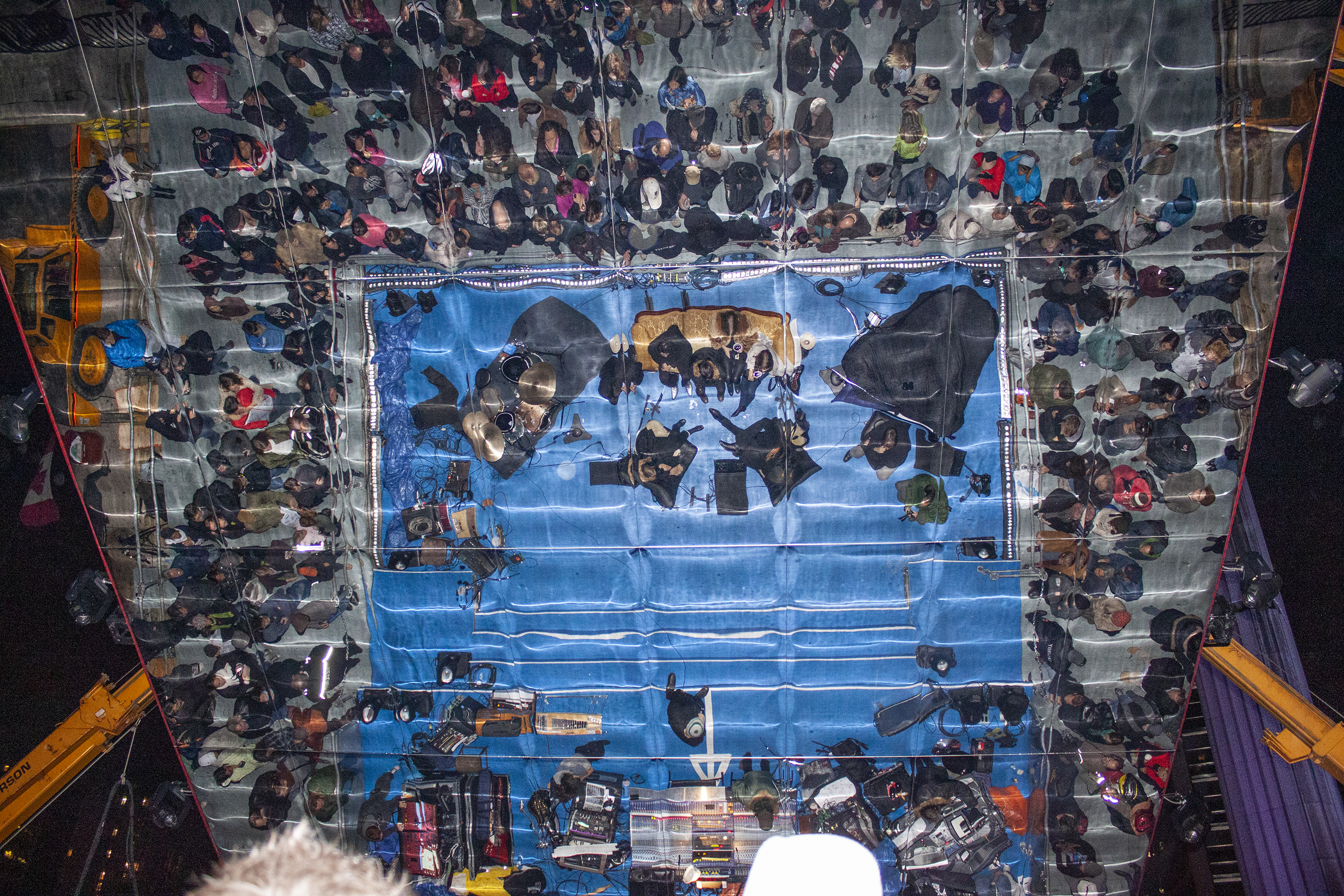
“JRN 807 — Advanced Photojournalism” was not much different than its predecessor. It was more focused (pun intended) on the art.
A lot of students disliked “JRN 123 — Ethics and Law in Journalism” mostly because its format was rather non-journalism-like (an essay, ahh!). Thing is, I can’t think of a more effective way of teaching libel law and such.
“JRN 405 — Special Topics in Journalism Theory” should have been renamed “Special Topic in Journalism Theory” because all we focused on was public relations and journalism. At first, I didn’t think the topic was worth exploring for an entire semester, but the class grew on me thanks to some interesting units, and insightful guest speakers. And, oh yes, there was an essay.
“POL 332 – Power and Influence in Canada” was basically POG 110. In fact, we used the same book.
Finally, there was “JRN 800 — TV Documentary.” Students were put in teams of four or five. Each person in their team had their own job(s): producer, photographer, reporter, researcher, or editor. The first few weeks were dedicated to learning about documentaries and the technical things. Then, minus weekly (or so) meetings with the professor, we were on our own shooting a documentary. We submitted two versions of it. Each team watched the rough draft with the professor, got some feedback, then submitted a final version, which everyone eventually watched together in the final class. There was a final journal assignment worth 10 per cent or so.

Fourth year
My final year consisted of just one semester because I already had all of the credits needed. If I took one more class in third year, I could have graduated back then, but I’m glad I didn’t because my last semester was important. The semester was split between “JRN 850 — Internship” and “JRN 910 — Integrated Masthead.” The first course was exactly that: an internship. We were told about it in third year and, for those who picked the first semester of the last year for the internship, had to find a placement over the summer with the help of the instructor. I knew for years that I wanted to intern at CBC News Toronto, so that’s all I aimed for. In hindsight, I should have applied to at least two other newsrooms in case it didn’t work out (but it did). The internship was supposed to last six weeks, but I convinced the CBC to let me start a week early because the internship was split between the local TV newscast and CBC Radio’s Metro Morning (I wanted to get more TV news experience).
My experience in the TV side of things was great at times. The internship got better each week. I went around Toronto with photographers getting clips from streeters, experts, and spokespeople for reporters’ stories. I also found interview subjects for stories and pitched stories during the morning meetings. I got to know several great journalists. I felt like I didn’t get enough opportunities to show off what I could do, but that came with the role. In hindsight, maybe I should have interned at a smaller station in a smaller city where I could have gotten more to do. I left a good enough impression that I was offered an editorial assistant job (on a casual basis) by the end of my first week.
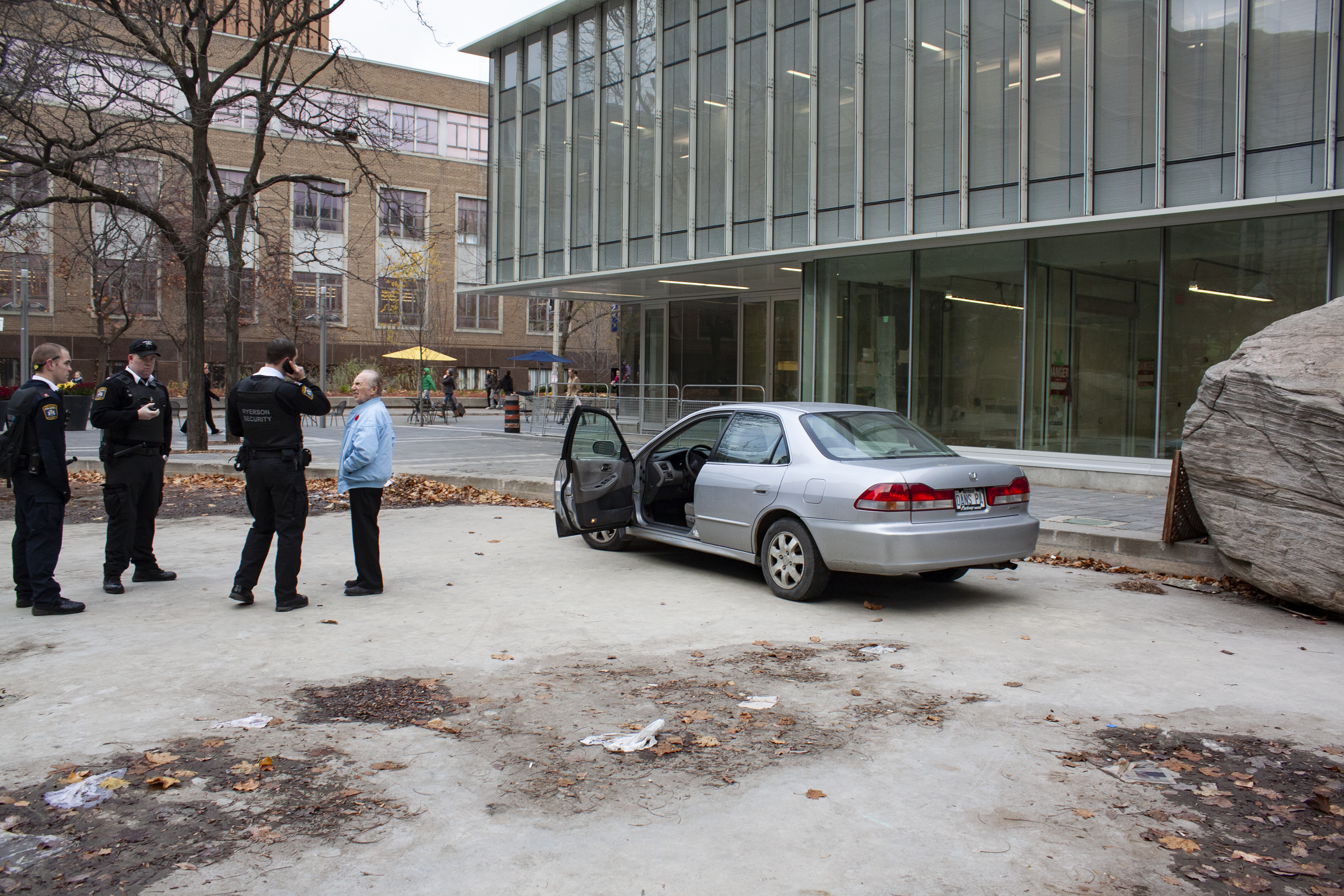
Oddly, I felt I got more out of my experience as an intern with Metro Morning. Most of the stories I pitched aired. I felt that some people got to know me better here. One employee spent half an hour detailing their methodology behind asking questions (the icebreaker, not asking yes/no questions, and such) to me, which was lovely. I also loved that I got to produce segments all by myself — pitching, guest-chasing, writing the script, and even booking the guest into the security system. Both experiences gave me first-hand knowledge of how the industry works, and I’m grateful for them.
Then came JRN 910, which entailed producing the school news outlet’s newspaper, TV newscasts, and website. The class was a bit of a buzzkill after getting to produce content for CBC News for several weeks, but it provided closure for me. Students had to file their stories for every Ryersonian platform; it was a pain at first, but now it’s how I produce all of my stories. I was a CP (content producer) for three weeks, which entailed pitching and reporting. The idea was to have the report online as soon as possible and then file it for the Wednesday paper (Saturday/Sunday deadline) and/or the Wednesday/Friday newscast. The next three weeks were for holding an editor or other supervisory role (the photo editor, in my case). The teamwork part of it was challenging for several people, and there were a few heated moments. Us undergrads made up half of the team while grad students made up the rest. It was tiring but also fun.
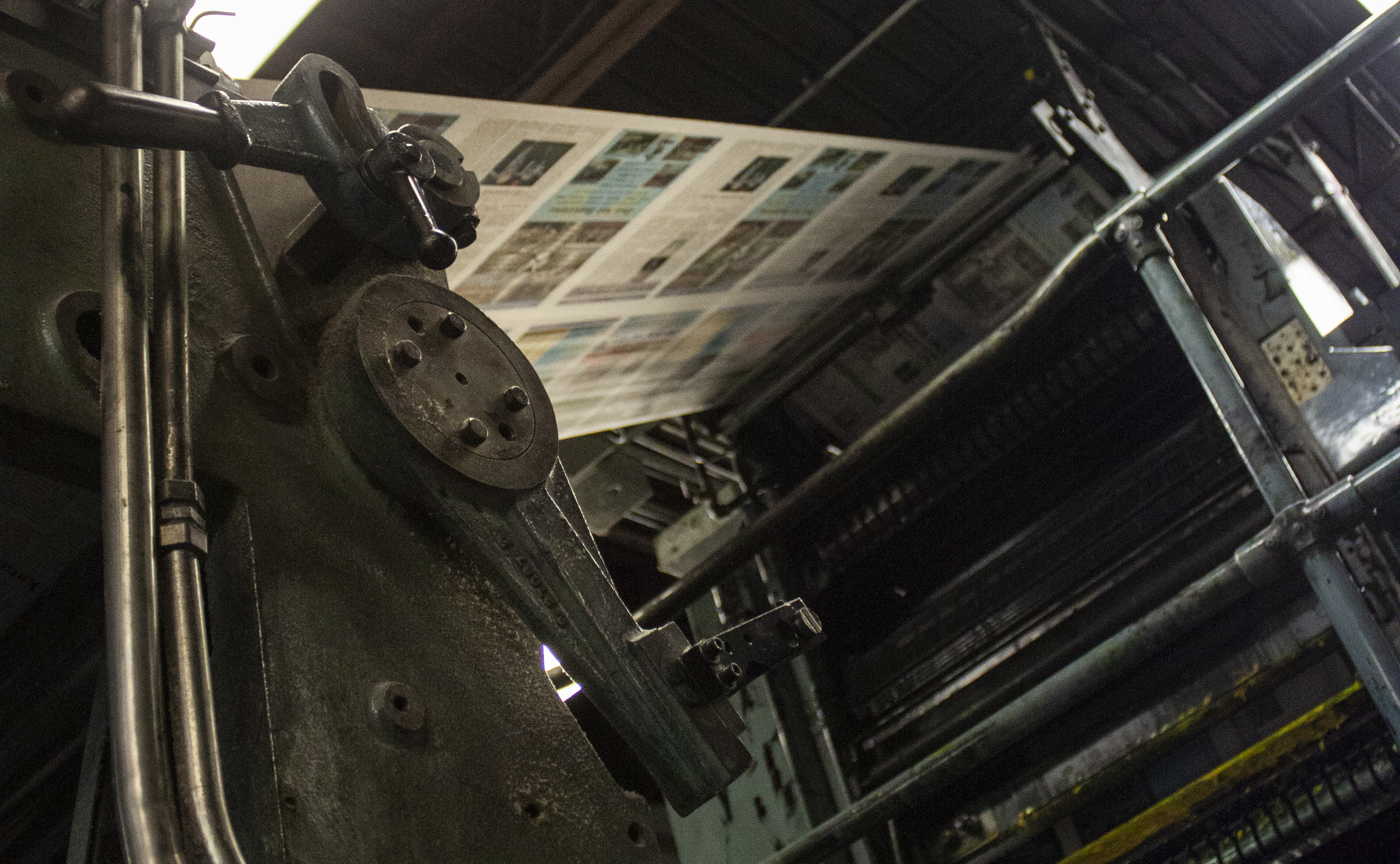
That minor that I didn’t get
Ryerson offered only a few minor options for journalism students. Since I had to take a certain number of non-journalism courses anyway, I thought it was worth getting a minor. Every minor required six (or so) credits, so I had to plan it out early to fit my schedule. The two English classes journalism students had to take counted toward the English minor, so going for that minor only required four extra classes, but I decided to go after a politics and governance (POG) minor (those courses also counted as electives). I saw only one journalism class ever offered at the Chang School (Ryerson’s continuing education school) during the summer, so I made journalism classes a priority during the school year, knowing that I could always take POG classes during the summer if I got behind.
Ryerson’s course calendar showed the courses needed for each minor. Problem is, I didn’t realize until several course completions later that minor requirements can differ depending on the year. In the end, I took five POG classes with either two or three of them counting toward my minor depending on the year’s requirements I wanted to fulfill. I contacted the POG program’s administration about my mistake. I was told that they would not let me cross-pollinate the required courses. So, even though I had taken five POG courses (the POG minor requires six) and was planning on taking one more POG course, my only option was to choose a calendar year and take either two or three more courses. I was dismayed by the outcome, and I decided to dump my minor aspiration.

Bachelor of journalism vs. master of journalism
I made a number of friends from the grad program during my time producing the Ryersonian. Having heard about their experiences, I felt their program was basically the four-year undergrad program condensed into two years, plus a master’s project. I had another class or two with some grad students, and I found our assignments to be the same. Sometimes they had an extra assignment and/or a longer word count for the final assignment. Although four years of J-school gave me more time to focus on my craft, I think that the bachelor program could have been turned into a two-year program and still delivered the necessities. Of course, I’ve never taken their program, so my thoughts are what they are.
Part of me wonders if I should have spent four years studying politics (undergrad degree) and then taken the master of journalism program. I would be significantly better at covering politics, I reckon. Despite my path having course-corrected itself in a way (I received my grad school acceptance email), I consider not giving enough thought to which level of ‘jeducation’ I should pursue my biggest regret during my aforementioned university-hunting period all those years ago.
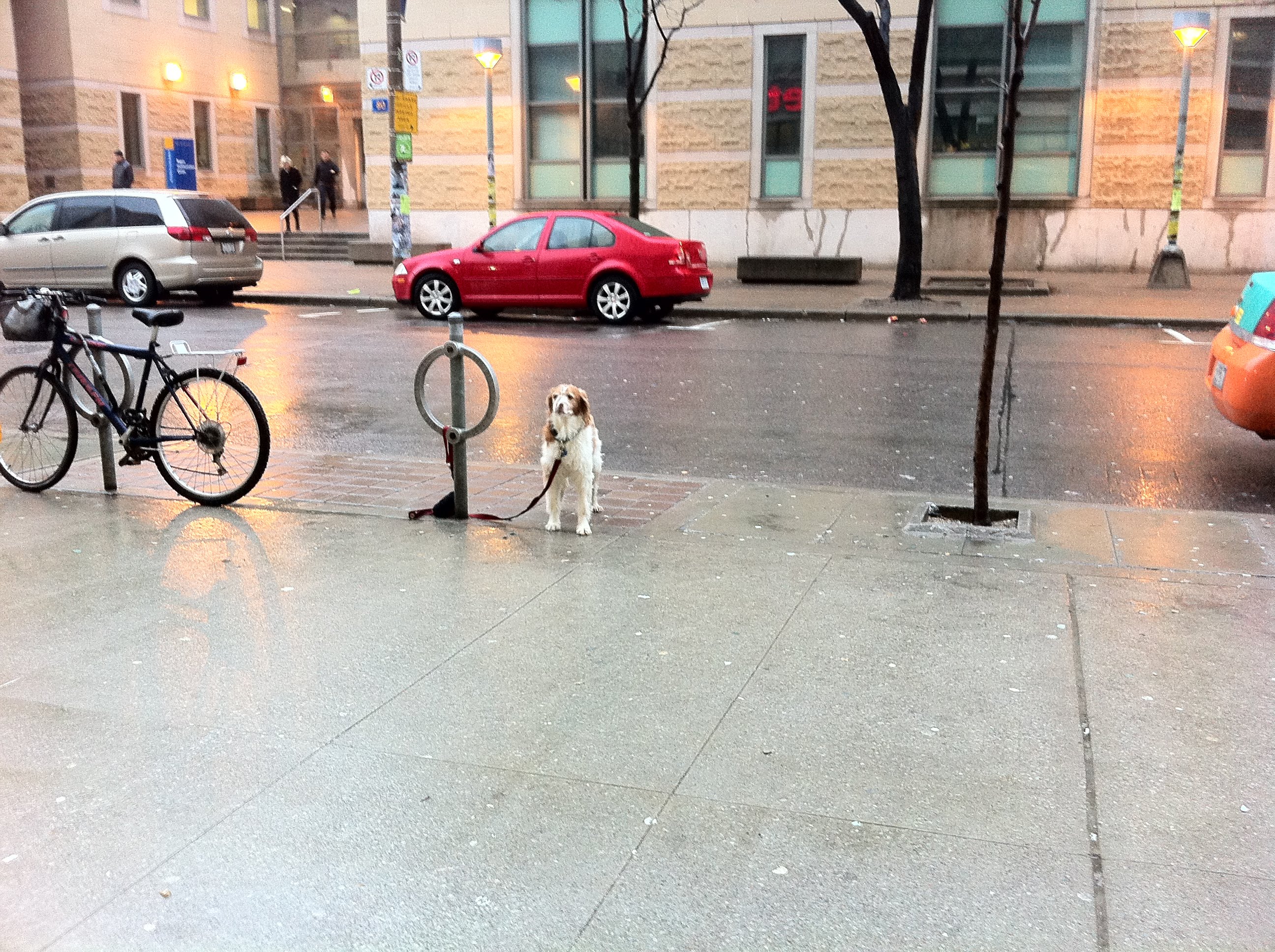
The campus
“The heart of the city” is a subjective location, but it’s fair to say that the campus is at least in one of the valves. The Rogers Communication Centre (RCC) is where almost every journalism class was held, so that’s where the J-school students would congregate (the lounge, namely). The campus was usually well maintained, and I hardly saw any garbage or graffiti anywhere (minus, of course, the bathrooms for the latter).
I felt safe on campus most of the time. That said, one night at about 9 p.m., three young men in the area east of Yonge and Gerrard streets gave me some trouble across the street from Ryerson. One of them knocked food out of my hand, and I could tell they wanted to attack me, but I was able to de-escalate the situation by myself (thanks for all of your concern, quiet passersby). Incidents like this can happen anywhere, though I’ve witnessed other similar incidents in that stretch.

Getting around campus was relatively easy because the main buildings were located within a few blocks of each other. During the winter, it was handy to walk from the Podium Building to the RCC via bridges connecting to Kerry Hall South. Several students said they wanted a tunnel from Dundas Station to the Podium Building.
I heard about Salad King approximately three milliseconds into the first day of school. The Thai restaurant is a favourite among students. Ryerson’s cafeteria (“the hub”) in Jogenson Hall offered generic food that I could find anywhere. It was a good place to hang, though. Journalism students often got their coffee fix at a mini-Tim Hortons in Kerr Hall South near the bridge connecting to the RCC. There was also a grocery store across the street from the RCC.
Journalism students who lived in residence at Pitman Hall had the benefit of being able to wake up five minutes before class (the building was adjacent to the RCC). Several out-of-towners I met chose to live in residence for the first year, then they found housing elsewhere for the second and later years once they were familiar with the city.
Students complained that there weren’t enough athletic facilities on campus. I only discovered the Ryerson Athletic Centre in my second or third year. It’s located under the Kerr Hall Quad, and it houses several gyms, a track, and workout equipment. It felt like a secret lair because it was so big yet hidden. Annoyingly, there were only four treadmills available when I used to visit it.

Ryerson Students’ Union
Students were forced to get a health insurance plan (unless they proved they already had one) costing more than $200 a year. The Ryerson Students’ Union offered a bunch of services, including free legal advice. I made use of the discounted Cineplex movie tickets the most, which cost $8 at the time. The executives of the union were often open to interviews for journalism students working on assignments.
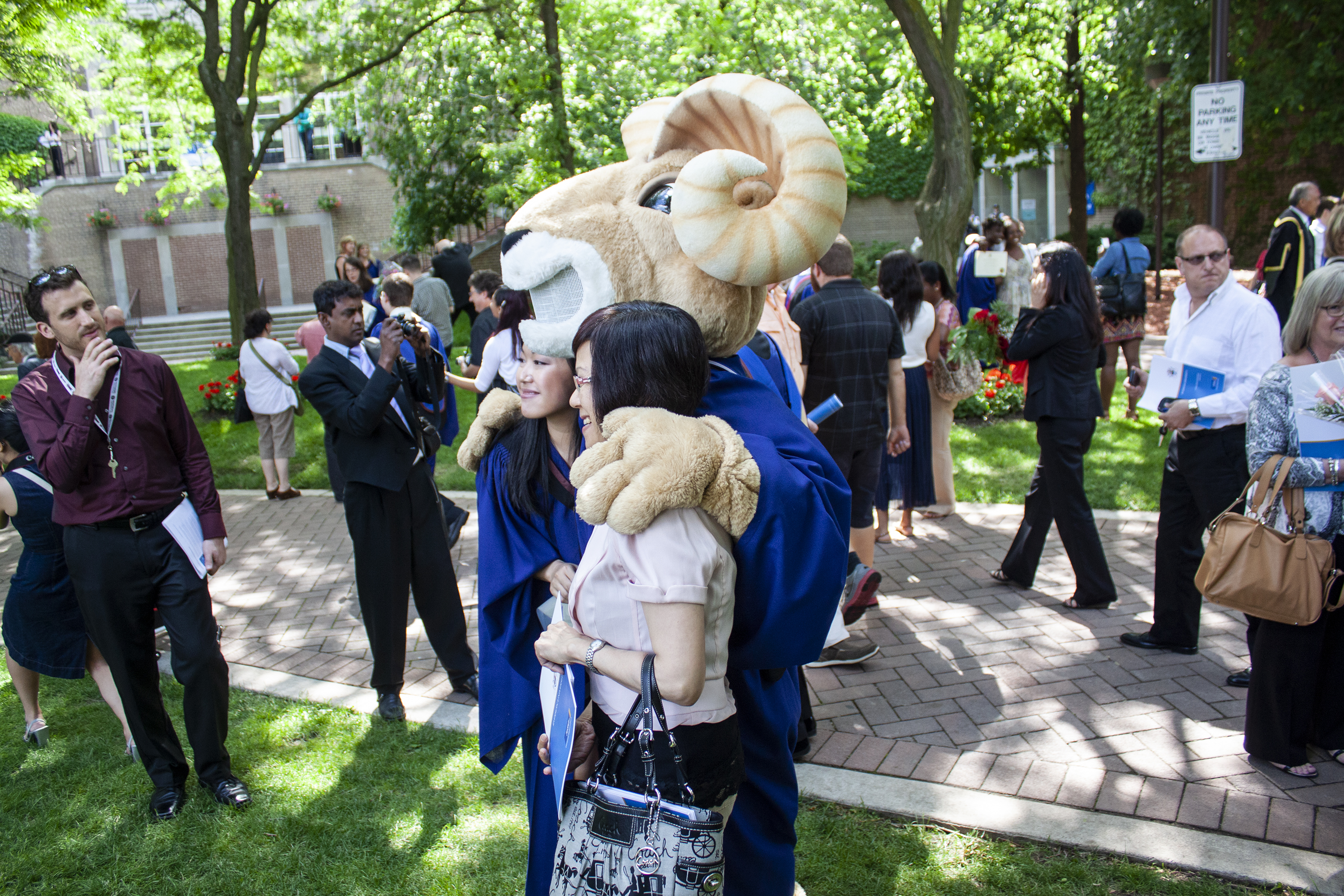
Convocation
Also called graduation and commencement, convocation is the culmination of the program. Mine was held at 2:30 p.m. on Friday, June 8, 2012. Students had to be there two hours early to get gowned. I must admit I was slightly bitter that we didn’t get those hats graduates always throw up in the air just before by a freeze frame at the end of movies. After a march around the quad, we entered the (thankfully) air-conditioned Ryerson Theatre and found our seats. Ivan Reitman got an honorary degree. Students then got called up for the walk-handshake-degree-handover dance. I walked, shook hands, suggested to Ivan Reitman that he should produce Ghostbusters III, then received the most expensive paper I’ve ever owned. From the march to the exit, the entire ceremony lasted about an hour and 45 minutes.

Conclusion
I went into the program expecting to continue my journey of becoming a professional newspaper reporter. I left with an unexpected thirst for becoming a professional video journalist. Much of that was because of one remarkable third-year broadcast journalism instructor. My other skills were developed and polished thanks to a few other terrific instructors and professors.
I learned how to report for every medium while using Toronto as my reporting playground. My skills improved, and I learned a lot by challenging myself to try everything.
I've just been gowned! Thank you, head marshal Cathy! Almost there. #RyersonClassOf2012 pic.twitter.com/17IY2oEc
— Steve Silva (@SteveCSilva) June 8, 2012
I felt that the theory-based part of the program lacked in some areas. The professors didn’t always give me the opportunities I was looking for to try new things and question more aspects of the craft. Thankfully, I got into a J-school graduate program, which will give me another opportunity to explore journalism in an academic setting.
Students were well aware that the journalism industry is changing and positions are being cut. This degree is a long-term investment, one that’s already paying off in multiple ways. I chose what I believed was the best path for me at the time. Now that it’s over, my initial feeling is that I can handle this job, and the degree was worth attaining. Having directly worked with professional journalists in my final year, I know that I can do what they do.
Hi, i want to know lil bit about this programe .. can we have a email discussion. [email deleted]
Ask the questions here in the comments section and I’ll respond; that way other people with the same questions can see.
Thank you for the insightful review on the Journalism program in Ryerson. Your suggestion of having a bachelor’s in something else then getting a master’s in Journalism makes total sense. However, I don’t think I’d have the money to pursue something of interest first then learn the technicalities of reporting.
I was also accepted into Western’s Media, Information and Technoculture so I was just researching which institute woould be better for me. I’m very bent on Ryerson, a school-mate claimed that it’s the best journalism program in all of Canada. It has a prestigious reputation, apparently.
This post has assured me about getting a job. My biggest fear is debt, all I want is job security since I will be totally dependent on OSAP. I want to know that I will get a job in this field after 4 long, hard years of studying and be able to pay off my loan.
Is on-campus residence worth it?
I’m glad this helped you. I’ve never lived in on-campus residence, so I can’t attest to its worthiness, especially since there are so many factors specific to you that I don’t know about. All I know is that Pitman Hall is located right beside the journalism school (amazing for winters). Good luck with the decision process.
Hi! So I see you’ve mentioned the RCC as one of the main journalism buildings. But what are the other main buildings journalism classes are held in?
I would estimate 70 per cent of all journalism classes (and tutorials) were held in the RCC during my studies. Kerr Hall was the next most frequented, then the Podium Building, followed by Eric Palin Hall, and, lastly, the Ted Rogers School of Management Building.
Hi! I’m a future first year student at Ryerson! Quick question, other than the RCC building, what other buildings will I constantly have to frequent? I would love to rent a place that’s generally close to most (or all) of my buildings!
It seems you posed this question again (with the same email but different name), so I’ll repeat my prior answer: I would estimate 70 per cent of all journalism classes (and tutorials) were held in the RCC during my studies. Kerr Hall was the next most frequented, then the Podium Building, followed by Eric Palin Hall, and, lastly, the Ted Rogers School of Management Building.